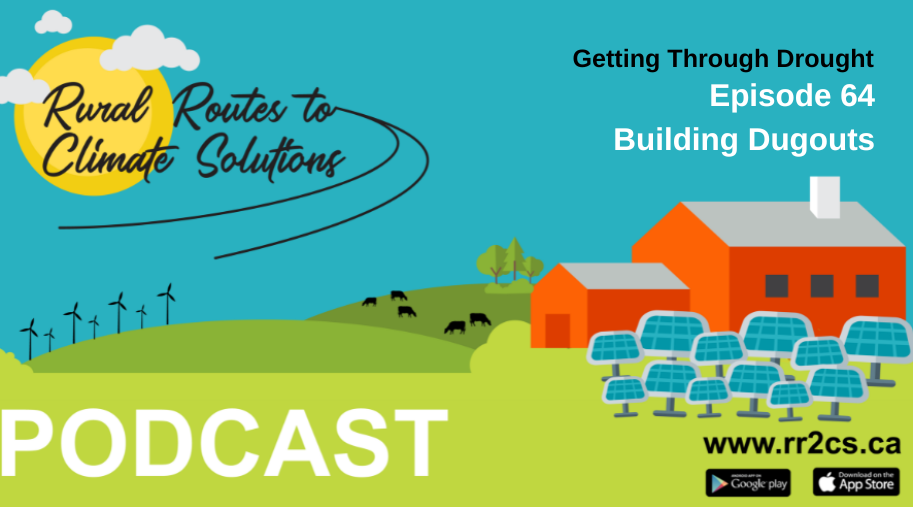Podcast: Play in new window | Download
Subscribe: RSS
Dugouts play an important role in cow-calf operations across Alberta. While some farmers have access to well water, most rely on these man-made reservoirs to provide the necessary water that their cattle need to thrive. However, building, repairing or expanding these dugouts can come at a high cost, which is why it’s smart for producers to seek advice and resources before breaking ground.
In this episode, we speak with Dr. Derek MacKenzie from the University of Alberta, who sheds light on the impact of drought on the soil. Later on, Brandon Leask, an Agricultural Water Engineer with the Government of Alberta, joins us to offer tips and cautions on dugout construction.
Highlights:
- 2:05 – Dr. Derek Mackenzie, who operates the Soil-Plant Relations Lab at the University of Alberta explains what is happening in the soil during a drought.
- 4:21 – What happens to soil microbes during a drought?
- 5:55 – Brandon Leask talks about his personal connection to agriculture.
- 6:22 – What exactly is an agricultural water engineer?
- 7:01 – What should you consider before building a dugout?
- 8:29 – Are there cases where dugouts don’t make sense for a cow-calf operation?
- 9:12 – Brandon explains how wide and deep to make a dugout.
- 10:05 – How many dugouts should, and could, a cow-calf operation have?
- 10:45 – How does a producer keep dugouts clean and thriving?
- 12:01 – What services are available through the Government of Alberta?
- 13:20 – What happens to undersized dugouts during a drought?
- 14:20 – What can cow-calf producers do in preparation for a drought?
- 14:45 – Brandon shares his experience during the drought of 2021.
- 15:37 – Brandon shares his final words of advice.
Useful Links:
- University of Alberta – Soil-Plant Relations Lab
- Canadian Agricultural Partnership Water program
- Sustainable Canadian Agricultural Partnership (2024)
- 310-Farm (previously known as Ag-Info Centre)
Want to learn more?
If you want to learn more about water management on agricultural land, we recommend downloading and listening to:
- Episode 11 – Soil Carbon Intro
- Episode 15 – Ecosystem Services
- Episode 23 – Water & Adaptation
- Episode 40 – Grazing for Water Infiltration
- Episode 53 – Dugouts
Our Farmers Blog is also a great source for stories of producers in Alberta who are going the extra mile with their management practices for the land, food and their communities.

